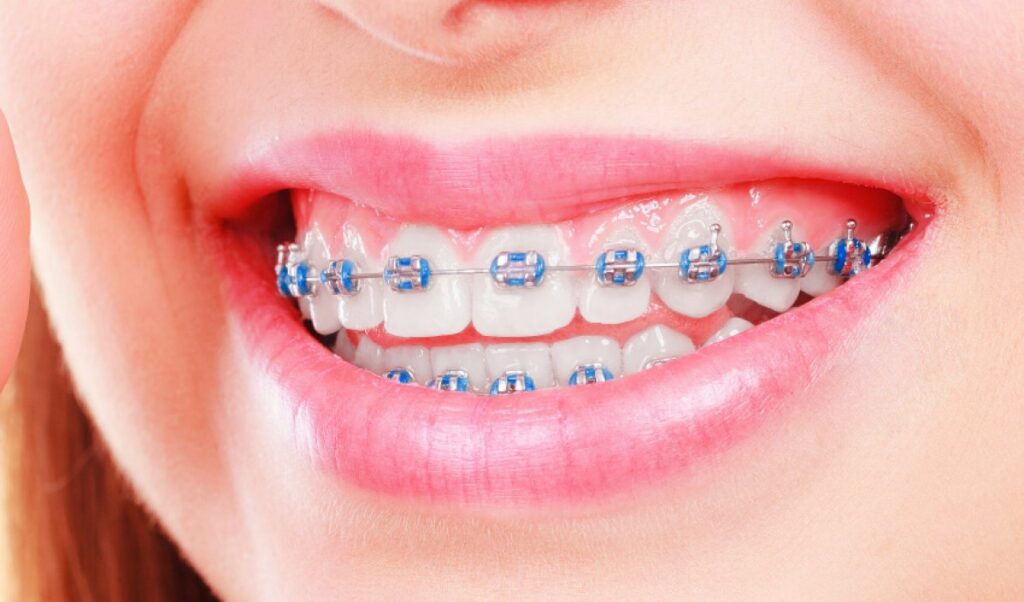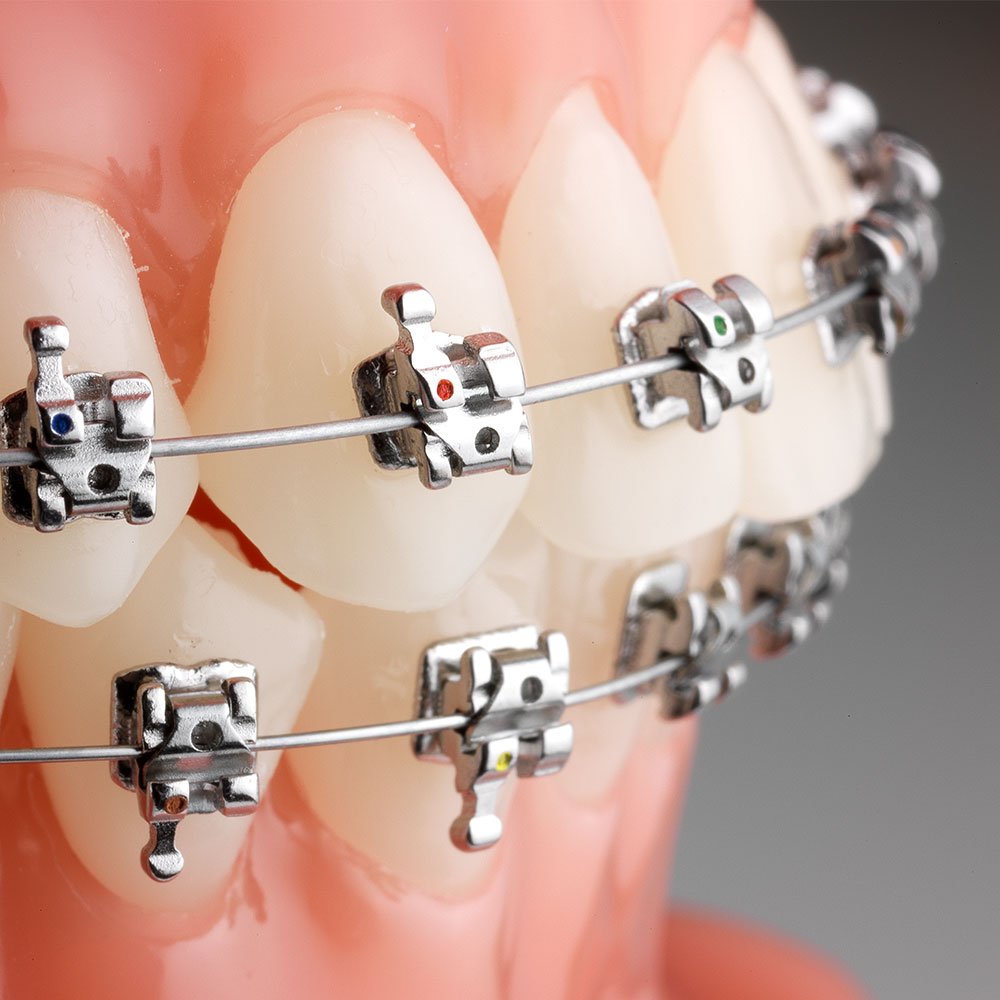Braces are the type of Orthodontic or dental appliances straightening your crooked teeth or correcting malocclusions. They use continuous pressure on each individual tooth to achieve the desired result. Different types of braces are highly beneficial in fixing the following conditions or issues:
- Open a bite.
- Under bite.
- Deep bite
- Reverse bite.
- Crooked bite.
- Jaw joint problems.
- Overcrowded teeth
- Misaligned or asymmetrical teeth.
What are the Different Types of Braces?

- Metal
- Ceramic
- Self-ligating
- Lingual braces.
- Clear aligners
Different Types Are;
- Traditional metal braces
Traditional metal braces is a high-quality stainless steel. Metal brackets connected, using a series of wires and elastic bands. Over time, these bands for gradually tighten the braces, helping the teeth align correctly. Metal brackets are still the most common type of brace for teeth straightening.

- Ceramic Braces
Ceramic brackets are a more popular choice for those who prefer a subtle look compared to other types of brackets . Even though they are the same size and shape as metal brackets these types of brackets have clear brackets that camouflage themselves over the teeth.

- SELF-LIGATING BRACES
Another type of brace quite similar to traditional brackets is self-ligating braces. They also use brackets and wires. However, they use clips instead of elastic bands to hold the brace wire in place and are available in both metal and ceramic variants.

- Lingual braces.
Lingual brackets are quite similar to traditional brackets.just like a fixed brace, using brackets and wires to gradually move your teeth, except the brackets are cemented to the backside of the tooth. Furthermore the wire joins the brackets together, pulling the teeth into position from the inside. Lingual brackets are as effective as other types of brackets .

Invisible braces are custom-made, virtually invisible, and more comfortable to wear than other braces. In addition Aligners move the teeth little by little. Pristine aligners are one of the leading clear aligners available.
How Do Clear Aligners Work?
Clear aligners work like any other type of brackets , where the trays apply pressure to your teeth to move them into the desired position. When you visit the orthodontist that provides clear aligner treatment, they will use an intraoral scanner to map out your mouth. Through visual imagery on the computers, they will then set a course for your treatment according to your case. These 3D visuals are sent digitally to the 3D printer to create a 3D model of your teeth. That is how raw, clear aligners are made. After this, a whole process of polishing and quality checking is done, after which you receive your customised clear aligners. Then start wearing them to get a gorgeous smile.
How are Clear Aligners Better than other types of Brackets?
- BARELY NOTICEABLE
Clear aligners are made with of high-quality clear plastic trays that are not easily noticed. It is “invisible braces.” This is one of the top reasons why patients choose clear aligners over other types of brackets .
- It can be removable.
Clear aligners ,taken out easily whenever you want. Unlike other types brackets there are no food or drink restrictions with clear aligners.
- It is easier to maintain oral hygiene.
Brushing, flossing, and generally maintaining oral hygiene are better and easier with clear aligners. Since they are removable, you can take them out while eating and also clean them easily.
- FEWER ORTHODONTIC APPOINTMENTS
Clear aligners require fewer orthodontic visits. Since they are custom-made, regular visits for adjustments are not required.

